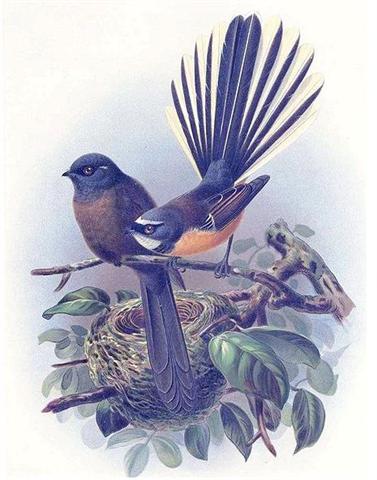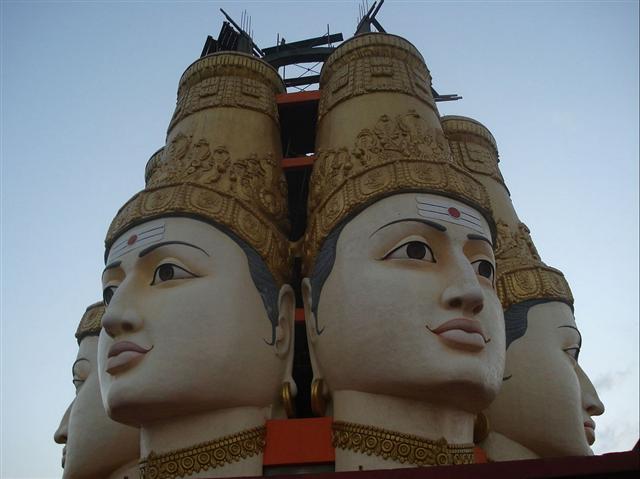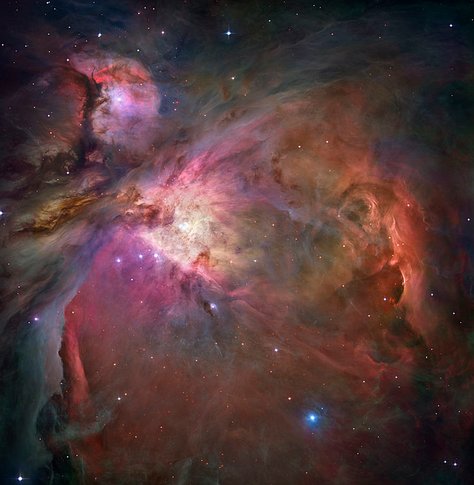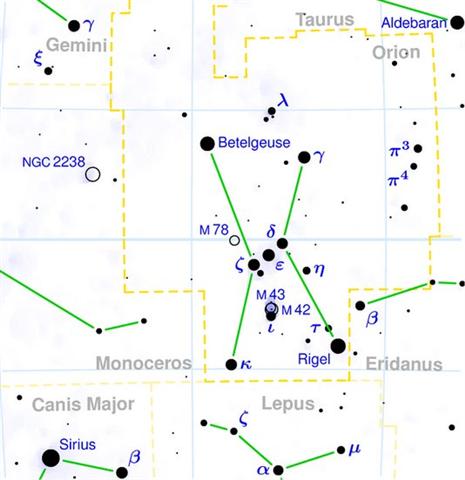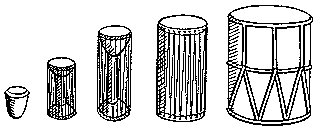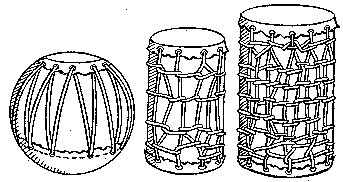|
RIGEL
Yesterday it was June 6, the national holiday of Sweden. ... What can possibly be the meaning of my expression 'as if by chance'? I decided to look again for such dates where Mars was at the same place as some prominent star. In Cartes du Ciel the path of Mars can be followed day by day, night by night, and my first recorded view was that from November 6 AD 2022. And I know that in June 6 (day 157 ↔ 314 / 2) will come the National Holy-Day of Sweden. As I at first remembered it, this was the day when our glorious warrior king Gustav II (↔ Gemini) Adolf was shot down from his giant horse in the year AD 1632. He had to be carried by a giant horse because he had become so very heavy from eating too much. What made me memorize this event from the history lessons when nearly nothing else would remain? Then I recalled that he did not die in June 6 but half a year away (9 - 3 = 12 / 2 months) in November 6 (310) and this was the only day when you would be able to buy and enjoy eating the bakery item named Gustav Adolf - after the king in question. Although I was half right, because at June 6 my wall calendar states that a pair of names to be celebrated should be Gustaf (→ Gustav II Adolf) together with his father Gösta → the first king of unified Sweden ... And of course my thoughts went to November 6 and to the orbit of the planet currently named Mars:
Can we expect Mars in this year (AD 2024) to be observed in the night of November 6 (310, *230), there to be on the point from where his retrograde path into the right ascension past will begin? No, a quick look in my earlier documentation reveals that Mars was close to 121 Tauri in June 13 (164, *84) in AD 2022, two years earlier. (310 - 164 = 146 → 365 * 2 / 5.) The synodic cycle of Mars is 780 days and because 2 * 365 = 730 we could expect Mars in AD 2024 to be seen close to the right ascension line at 121 Tauri around day 164 - 50 = 114 (April 24) and not in June. Thus not in November 6. Although this calculation assumes that Mars like his far away king Saturn would move along in a steady and well controlled path without any abrupt changes in speed or direction.
And strangely the diagram above does not fit with the behaviour of Mars when he should go from e.g. November 6 (310, *230) to December 6 (*260, 340). Instead it seems that it was required to go forward not in the same year but by advancing ahead with 2 years plus 52 days.
The star denoted 121 Tauri (→ May 1, 121, *41, Bharani) was close to the place for The Heavenly Gate - a name for ζ Tauri.
.
Which seems reasonable because half a year away in November 6 was ideally the place where Mars suddenly would turn around and look back towards his past, implying no more future (↓, †).among us living creatures (who are always following the direction of the arrow of Sun time)..
Instead Mars would here begin his retrograde phase - returning to his origin, to his nest (*, ↑) - in order to be in good shape to once again be reborn from his 6 sister nurses (Tau-ono), ideally around January 20 (365 + 20 = 385 = 310 + 75).
... The Mahabharata insists on six as the number of the Pleiades as well as of the mothers of Skanda and gives a very broad and wild description of the birth and the installation of Kartikeya 'by the assembled gods ... as their generalissimo', which is shattering, somehow, driving home how little one understands as yet. The least which can be said, assuredly: Mars was 'installed' during a more or less close conjunction of all planets; in Mbh. 9.45 (p. 133) it is stressed that the powerful gods assembled 'all poured water upon Skanda, even as the gods had poured water on the head of Varuna, the lord of waters, for investing him with dominion'. And this 'investiture' took place at the beginning of the Krita Yuga, the Golden Age ... ... The little birds now did their best to comply with Maui's wish. They sat as still as they could, and held their beaks shut tight, and tried not to laugh. But it was impossible. It was the way Maui went in that gave them the giggles, and in a moment little tiwaiwaka the fantail could no longer contain himself. He laughed out loud, with his merry, cheeky note, and danced about with delight, his tail flickering and his beak snapping. Hine nui awoke with a start. She realised what was happening, and in a moment it was all over with Maui. By the way of rebirth he met his end ... This name Krita Yuga for the Golden Age of the Bull sounds as if was a hint leading to Krittikā - the nurses of Kārttikeya.
Now my mission should instead be to try to uncover the features of The Gate to Hell (the way to Hades): ... That there is a whirlpool in the sky is well known, it is most probably the essential one, and it is precisely located. It is a group of stars so named (zalos) at the foot of Orion, close to Rigel (beta Orionis, Rigel being the Arabic word for 'foot'), the degree of which was called 'death', according to Hermes Trismegistos, whereas the Maori claim outright that Rigel marked the way to Hades (Castor indicating the primordial homeland) ... *113 (Castor) - *78 (Rigel) = *35 → 5 weeks.
Surely we can here see a strange feature between the star denoted 65 (Ψ) Eridani and Rigel which could have inspired such thoughts.
And from there we should also come to think about the 'cauldron' form on the other side of M42 (the Orion Nebula):
And fforthermore, we should take into consideration also M78 (↔ Rigel, *78):
So naturally I guess the planet Mars and the star Rigel Orionis might have been ideally intertwined so to say in the views of people living in some remote past. This was where the 'armpit drum' of cosmos seems to have been turned upside down. P Mgv.: vakavaka, the breast. Mq.: vakavaka, vaávaá, rib. Ma.: wakawaka, parallel ridges. We shall need all the available material in order to determine the germ sense of this word. Sa.: va'ava'a, the breast-bone of a bird; fa'ava'a, the frame as of a slate. To.: vakavaka, the side. Fu.: vakavaka, the side below the armpit. Ha.: hoowaa, to make furrows. In all these we may see the idea of ridge or depression, or of both, as primal (Rapanui, Samoa, Marquesas, Maori, Hawaii), and as secondary the part of the body where such appearance is common (Mangareva, Tonga, Futuna). ... The most important of all drums, he said, was the armpit drum. The Nummo made it ...
... Each drum had a sound of its own, and so each family had its own language, which is the reason why there are different languages today. The first two families, settled in the south, spoke two dialects of Toro, not very different from each other; the third family spoke Mendéli; the fourth spoke Sanga; the fifth another form of Toro; the sixth Bamba; and the seventh Iréli. Lastly the eighth family was given a language which is understood in all parts of the cliff. Just as the eighth drum dominates all the others, so the eighth language is understood everywhere ... Here shoujld be where the 'dust' was scattered a hundred versts away: ... There is a mill which grinds by itself, swings of itself, and scatters the dust a hundred versts away. And there is a golden pole with a golden cage on top which is also the Nail of the North. And there is a very wise tomcat which climbs up and down this pole. When he climbs down, he sings songs; and when he climbs up, he tells tales ...
|
|||||||||||||||||||||||||||||||||||||||||||||||||||||||||||||||||||||||||||||||||||||||||||||||||||||||||||||||||||||||||||||||||||||||||||||





